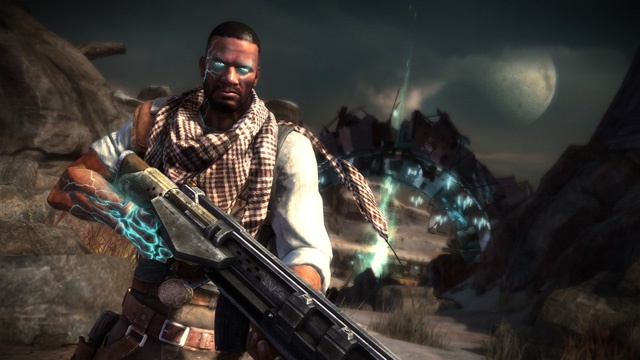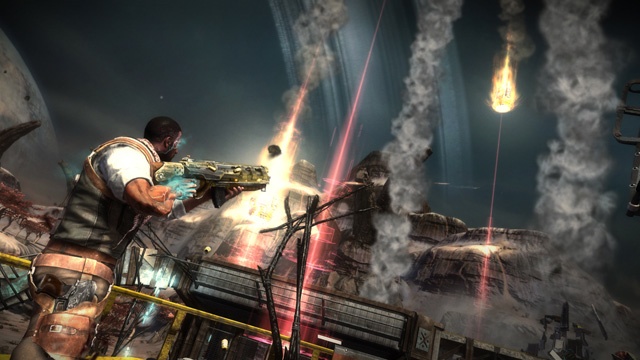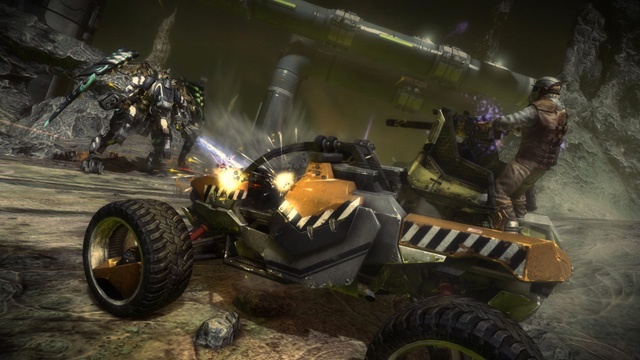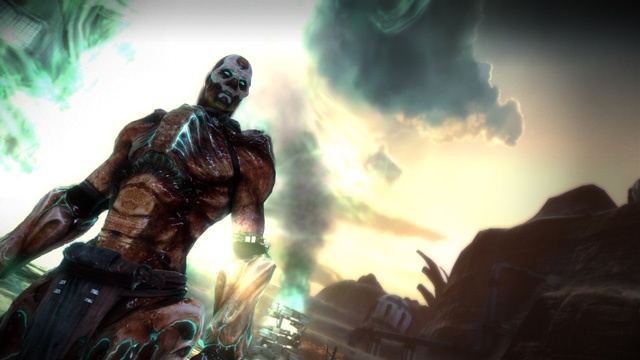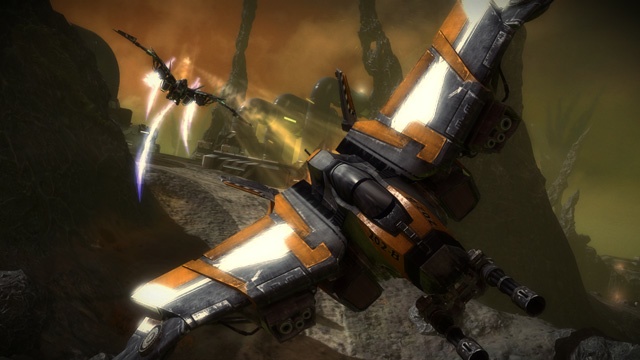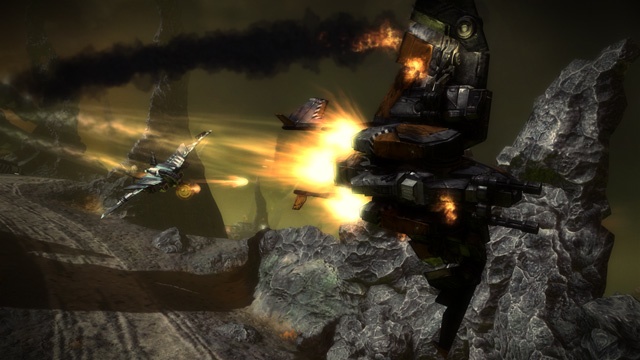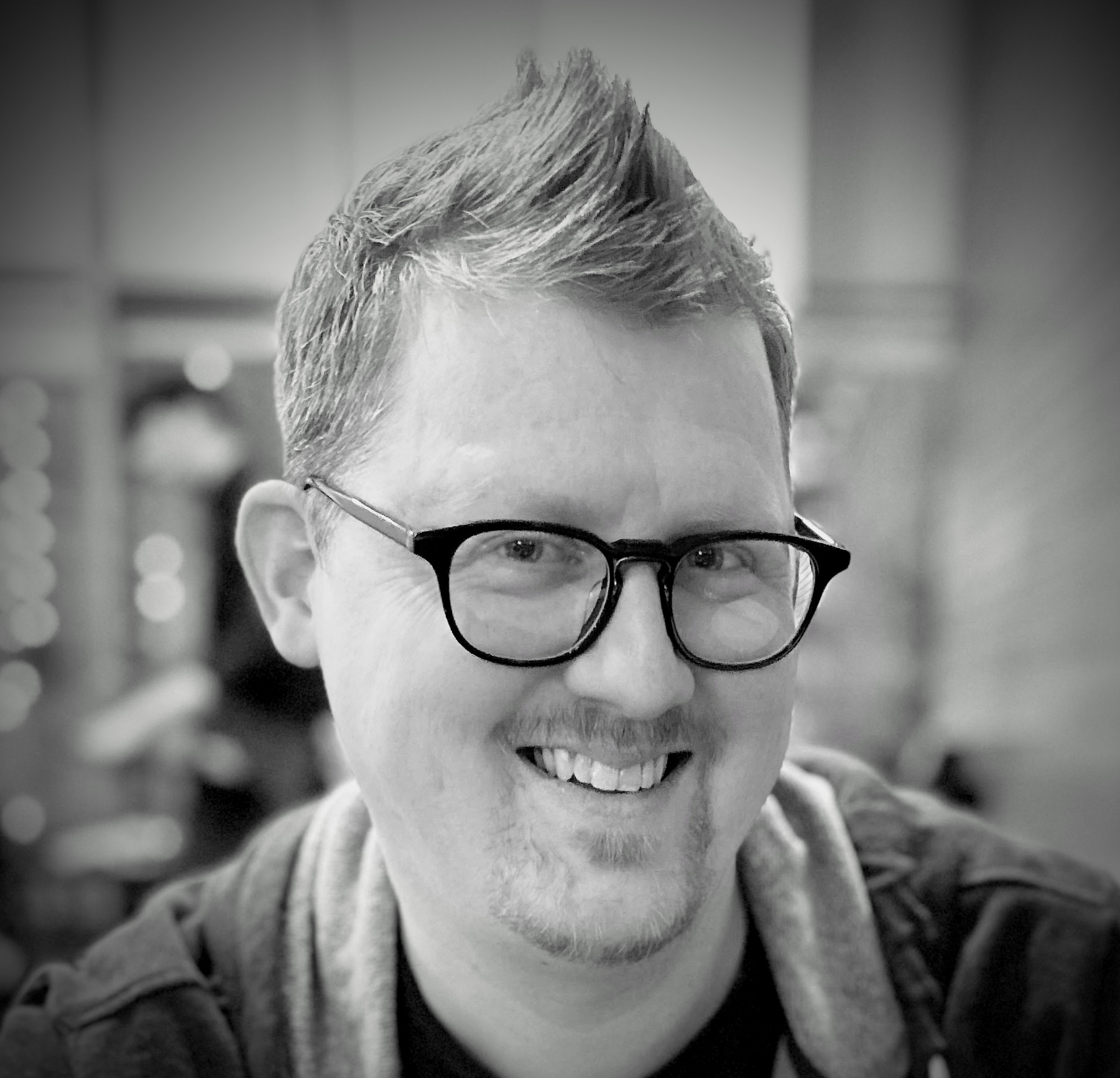Starhawk
LightBox Interactive | Lead Game Designer | January 2009 - May 2012
Starhawk was LightBox Interactive’s debut title: a fast-paced, multi-modal third-person shooter set in a Western-inspired universe torn apart by the rush for rift energy. Protagonist and rift salvager Emmett Graves returns to his hometown of White Sands after many years away, pursuing his outlaw brother whose activities threaten the success of the mining contract that sustains the town. He’ll come face to face with the darkest moment in his past, and discover that there’s more to rift energy than at first appears.
Starhawk introduced the innovative Build & Battle system, allowing players to build fully-destructible combat structures on-the-fly: bunkers, walls, towers, turrets, vehicle pads, and more. Combat rages on foot, in ground vehicles including jet bikes and massive, six-wheeled tanks, and in the air by way of the titular Starhawk: a screaming combat jet that can instantly transform into a ground-stomping war mech. And all of this takes place both in the single-player campaign and in fully-featured 32-player multiplayer matches.
Development
I was Starhawk’s lead designer from concept to completion. I was deeply involved in the creation of the game concept and story, and contributed writing and story development both in-game and in cinematics. I also worked closely with Sony’s music team to identify and direct the soundtrack’s unique Western flavor.
I built our eight-man game design team from scratch over the first two years of development, and directed the design and development of levels, combat encounters, scripted sequences, and design tools. And of course I coordinated work among all the studio disciplines – art, engineering, audio, production, and QA – and interacted regularly with our management team at Sony.
Finally, I did numerous press appearances and interviews for the game, including a preview for G4TV, a two-part interview with fan site StarhawkRADIO (part 1, part 2), and an in-depth studio culture interview with Gamasutra, and I was a key press contact during the game’s outing at E3 2011.
Lessons learned
This was my first major project in a leadership role and required a significant mindset shift from my prior comfort zone as an individual contributor. I learned how to conduct effective game design interviews, and interviewed hundreds of candidates while building my team. I then discovered how crucial it is to establish a healthy team culture and a sense of shared purpose, while giving everyone opportunities to contribute their unique perspectives and skillsets and helping them grow as designers. (In fact, members of my team later graduated to studios like Bungie and Naughty Dog.)
This was also the first project where I had significant press exposure, which meant learning how to effectively interact with journalists both on- and off-camera, as well as balancing the public and internal messaging around the product.
Lastly, I had the opportunity to work with SCEA’s incredible music team to direct the soundtrack. While I’d long been composing music as a hobby, this was the first time I got to see a complete production pipeline, from concept and composition, to production to editing, to implementation and mixing.
Screenshots
